Fly selection has always been one of the most frustrating aspects of fly fishing for beginning and casual anglers. We all know the old mantra of “match the hatch” but sometimes that approach doesn’t meet muster. So when do you switch it up? At what point do you throw in the towel on the pattern you’ve got on and try something new?
Unless you’re familiar with the water you’re fishing, you should always wait until you get to the stream to rig up a fly. Once you’re streamside, take your time. Stop and smell the roses. Lift some rocks. Look for spider webs and see what Charlotte caught last night. Each of these can serve as great indicators of what’s happening on the stream. Base your decision on your observations and experience, not what the fly du jour was in your magazine subscription this month.
Once you’ve decided on a fly, off you go. But what if the results don’t come? What’s to blame? Certainly it could be the fly but chances are, if you’ve made your fly selection thoughtfully, your choice of pattern should be the last thing you look to change.
If you are confident that you’re fishing to productive water make sure you are fishing productively. If you’re fishing dries are your drifts good? Are you getting the fly in front of the fish? Is your tippet light enough? If you’re fishing nymphs, these same considerations apply, as well as more — because now you’re working in 3 dimensions. Have you adjusted your weight? Added or subtracted tippet to adjust for water depth? Moved your indicator? Often while nymphing, it’s not about the fly but the small adjustments in you system that’ll make the difference.
If I feel confident that I’ve been fishing productively to productive water and am not getting any strikes, I’ll generally fish a nymph pattern for around 10 minutes before I change anything. Most often, the first change will be to a fly of the same pattern, only down or up a size. Often enough, that’s the key.
When fish are actively rising and your fly has gone over them 4-5 times, change it up. Actively feeding fish will generally rise to a fly if you’ve got the right size and presentation. As with nymphing, look to adjust size before pattern, but if the takes still don’t come, don’t waste your time pounding the water with a dud, odds are you’ll spook the fish and put them down before you hook them. More often than not the fish are eating the hatch you’re not seeing, aka the “hidden hatch”. There may be size 8 Drakes all over the place, but I’d bet the ranch they’re eating the size 16 sulphers you’re ignoring.
The best anglers can catch fish on flies that look like cat puke. Fishing correctly will always produce more results than fishing the correct fly. Focus on the other aspects of your angling and make adjustments to your rig or fly size before you lose confidence in your pattern.
Pattern can play an integral part in determining your angling success, just remember that it should be the last thing you adjust on the water.




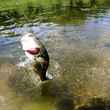






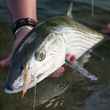









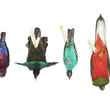
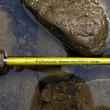








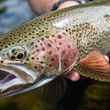

Comments